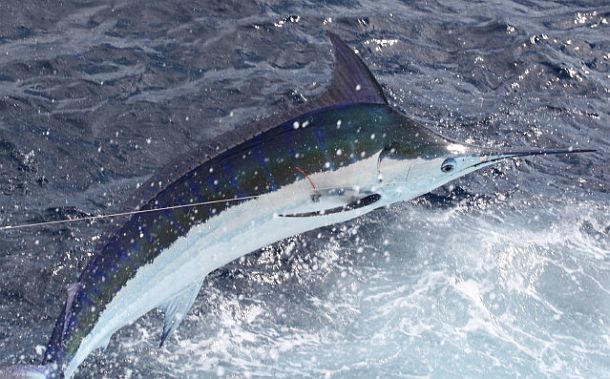ACCORDING to a new study, around 86 percent of billfish released alive will survive, no matter how they’re caught — on light gear, heavy tackle or even on commercial longlines.
These findings were published in study report “Post-Release Mortality in Istiophorid Billfish”, which has been accepted for publication in the Canadian Journal of Fisheries and Aquatic Sciences.
News of the report findings published on American website Sport Fishing stated:
Rather than conduct new research on billfish, a group of pelagic fisheries scientists performed a meta-analysis of existing data from 46 different tagging/tracking studies that measured the release mortality of billfish. Those studies entailed 400 pop-up satellite archival tags and 64 acoustic (ultrasonic) tags involving most species of billfishes (family Istiophoridae: marlins — blue, black, striped and white — plus sailfish and spearfish).
But many of those studies had very small sample sizes; small studies give this overview less statistical power. Ultimately, larger tagging studies are needed with a larger sample size (but satellite and acoustic tagging studies don’t come cheap, ergo they don’t come often).
Still, this effort produced surprises: The authors hadn’t expected to find that billfish survive release at a high rate no matter the species, how caught and handled, or how long the fish were hooked. The actual range of release mortality predicted by the meta-analysis with 95 percent confidence is 10.3 to 17.6 percent. With a bit of rounding, the mean suggests that 14 percent of all species considered together do not survive release.
I had trouble wrapping my head around the idea that billfish — obligate ram ventilators that must swim to respire — would survive release from longlines at the same rate as, say, tournament-caught fish.
The study’s lead author, Michael Musyl, with the Pelagic Research Group in Honolulu, agreed, acknowledging his “surprise [that] there were no significant differences in post-release mortality rates between gear types and species.
“I had expected … longline-captured fish would suffer higher mortalities,” Musyl told me. Moreover, “factors like tournament fishing, line class, body size, resuscitation, latitude and others also made no apparent difference in mortality rates.”
Read the full story at: http://www.sportfishingmag.com/news/good-news-bad-news-billfish?cmpid=enews030315&spPodID=030&spMailingID=22228016&spUserID=ODMwMzk3NjI4MzMS1&spJobID=520321206&spReportId=NTIwMzIxMjA2S0

















